Podcast: Download
Subscribe: Apple Podcasts | RSS
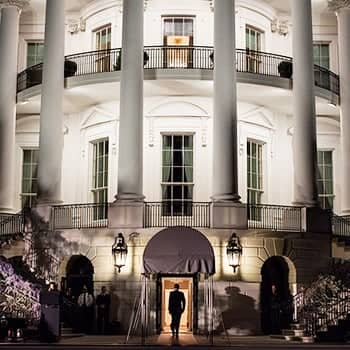
On this page, I’ll show you how.
Even better, I’ll show you an intermediate-level skill that will let you add their dates in office.
And if you want to go full-blown expert-level, you can add more details too.
The more you explore memory techniques for powerful learning goals like committing American historical figures to your memory, the more you’ll be up to the demands of more rigorous memory tasks.
Excited? I sure am!
Here’s what this post will cover:
How to Memorize the Presidents: An Ancient and Proven Method
A Proven 3-Step Process for Memorizing the Presidents with a Memory Palace
Intermediate: The Best Way To Memorize The Presidents
Advanced: Adding More Information to the Presidents
Common Questions About Memorizing The Presidents
How to Memorize the Presidents: An Ancient and Proven Method
First, you need to build a Memory Palace that is suited to the task.
A Memory Palace is a well-formed journey that you create in advance. Typically, it is based on a familiar building or route.
Some people prefer indoor journeys. Others like a mix of indoor and outdoor locations. And some people only use the outdoors. Yet others use fantasy locations like the homes in TV series or the landscapes of videos games.
How do you choose?
The answer is easy:
Start simply and keep in mind that you need quite a bit of space for all of the presidents. So let’s do the math as of 2020.
The current list involves 45 names.
That means your Memory Palace needs to have 45 different “loci.” That’s the Ancient Greek term used when talking about the Method of Loci. This has also been called the Roman Room method.
To make things more contemporary, I now call these “loci,” “Magnetic Stations.” You’ll see why when we get to the more advanced techniques. Once set up correctly, you can use them to literally stick more information in place, just like a magnetic can hold a calendar to the surface of a fridge – and allow you to slip in receipts, concert ticks and more.
Getting Started Tips:
To create 45 stations, I suggest you draw them on paper and make a journey that is linear and logical. It should not be something you have to memorize. It should be a journey that is already in your memory. That will save you time and energy.
For example, I will use this apartment and the surrounding neighborhood:

To identify 45 stations, I will start in the most logical spot that allows me to move slowly and in a linear journey. This is important because you want to move without confusing yourself as you proceed from one place to the next.
Numbering the stations is easy and might look like this:
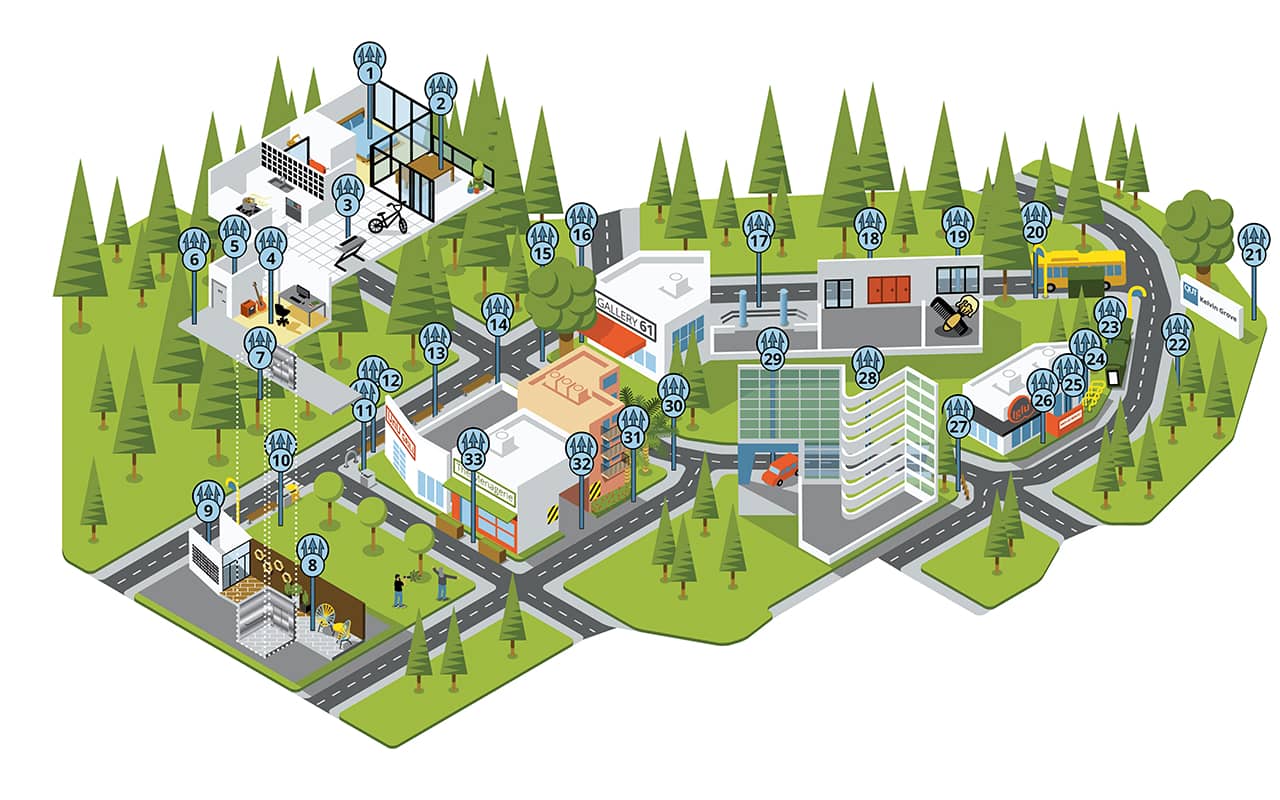
Of course, you don’t need to hire a fancy artist to represent your Memory Palace for the presidents. You just need to get out a piece of paper and draw it. Like this:
Start small. You don’t have to memorize all of the presidents in the same Memory Palace. You also don’t have to memorize all of them at once.
What you will need, however, is a strategy, and the Memory Palace technique is the best for reasons we’re about to explore.
A Proven 3-Step Process for Memorizing the Presidents with a Memory Palace
1. At this point, we’ve got the first step covered: Have one or more Memory Palaces prepared in advance.
This step is really important because you will slow yourself down if you create the Memory Palace as you go. This creates mental issues like worrying that you’ll run out of space or lead yourself into a dead end.
2. Step two is to begin with the first president and the first Magnetic Station of your Memory Palace.
You need to bring them both to mind at the same time. Let’s start small with the first four presidents and just one room of a Memory Palace. This one is made from an apartment I used to rent in Berlin, Germany:
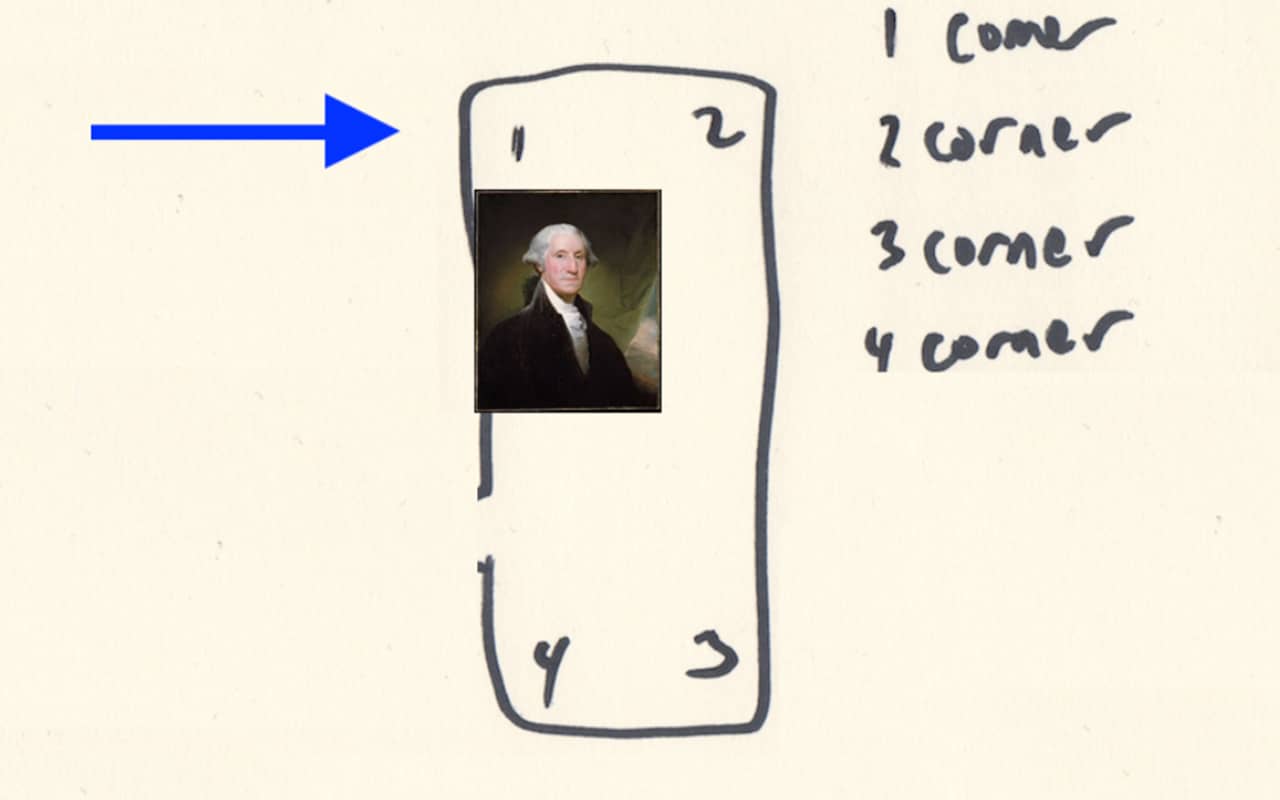
As I think about that first corner, I’m also going to think about George Washington.
Then, using a process called Elaborative Encoding, I’m going to allow my mind to bring up an association.
WARNING: There are some incredibly sophisticated techniques you can learn that help with the association process.
Some beginners go down the rabbit hole and try to learn these before they’ve mastered the fundamentals. Please don’t put the cart before the horse. Start simply and add tools like the pegword method to your skillset later.
For now, the easiest and most direct thing to do is think of another person named George. I think about George Duke, a musician who played with Frank Zappa.
I think about George Duke “washing” Frank Zappa’s hair on the first station of the Berlin apartment. This “encoding’ links the name George with the act of washing and that space in the Memory Palace, which makes it easier to “reverse engineer” later the name George Washington.
This process is like building a mathematical equation out of words, images, concepts and spaces in the world. The real trick is in making sure that it all makes sense to YOU personally.
For example, right now you might be scratching your head wondering who the heck George Duke and Frank Zappa are and how you’re going to find such rich imagery to use.
If that’s the case, the answer is simple: practice.
I used to be slow and rusty, just like everyone else who wants to memorize lists like the names of the presidents.
But with practice, I got much faster. And I put all that I know together for you in this simple course:
To continue, all you have to do is mentally move to the second station of your Memory Palace. As you’re thinking about that location, start to mentally “weave” together a new name with some imagery.
In this case, we’re looking at John Adams.
If you know these pop culture icons, you could have John Wayne in a shootout with a character from the Addams Family.
Or you could be a bit more abstract and think of the famous advertising writer David Ogilvy in a fight with John Hurt. John is a one-to-one name correspondence, but in the case of Ogilvy, your mind is making a leap between his name and the profession of advertising.
As you grow with these skills, you’ll discover many more ways to make associations. The more you learn about memory techniques and practice them, the faster your association skills will grow.
Now then, there’s one more step before we get to the advanced options like adding dates.
3. Step three is Active Recall. In order to get the information into long term memory, you really do have to “reverse engineer” the imagery you place in your Memory Palace.
As neuroscientist, memory athlete and memory expert Boris Konrad told us on this episode of the Magnetic Memory Method Podcast, no reliable memories can form without it.
Different people engage in Active Recall in different ways. Dominic O’Brien has suggested that you need to recall the information using his Rule of Five.
Personally, I’ve needed to be a bit more rigorous than that for much of the information I’ve memorized – but other times it can be less. It all depends on the nature of the information and your strategy.
For the presidents, I would suggest you work in small sets of 2-10 names. Keep a Memory Journal that includes your Memory Palace drawings. Then test yourself in writing about 5 times the first day – or more often. There is no magic number, which is why I created this video on the problem of learning to create your own “repetition rules.”
The magic of memory techniques is that sometimes you’ll get the name back automatically without needing to think of the images you used.
Other times, you’ll get the images back first and then reverse engineer the name. Ultimately, you want to get the target information into your memory as quickly as possible. The better you get with the technique, the more you’ll develop a sense for how much repetition is needed.
Intermediate: The Best Way To Memorize The Presidents
Remember when I suggested not putting the cart ahead of the horse?
This suggestion still remains true. But the fact of the matter is that if you really want the best list of presidential info in your memory, you’re going to want to add the dates.
Here’s how:
You’ll need to learn a system that lets you memorize numbers rapidly. Things get a bit complicated because there are a few to choose from. My analysis of the Dominic System ultimately argues that the Major Method (sometimes called the Major System) is easier and better for most people, but it’s ultimately a personal preference.
The important factor is that you decide to be a person who improves your memory and make this a journey for life. You can add multiple techniques to your memory toolbox over time.
For the purposes of this tutorial, let’s assume you choose the Major. You just need to memorize this simple system:
Then, when you see dates you want to memorize, you’ll combine the consonants to create words.
For example, Thomas Jefferson was the third president. I would think of a friend Thomas I know arguing with George Jefferson from the TV show, The Jeffersons. Then, using this system, I would make words for 1801-1809, which are his dates in office.
Since 18 is t+v in the Major, I’m actually already covered by my association for Thomas Jefferson. The Jeffersons is a TV show, after all. I just need to recognize that, link it to the Major and we’re good to go.
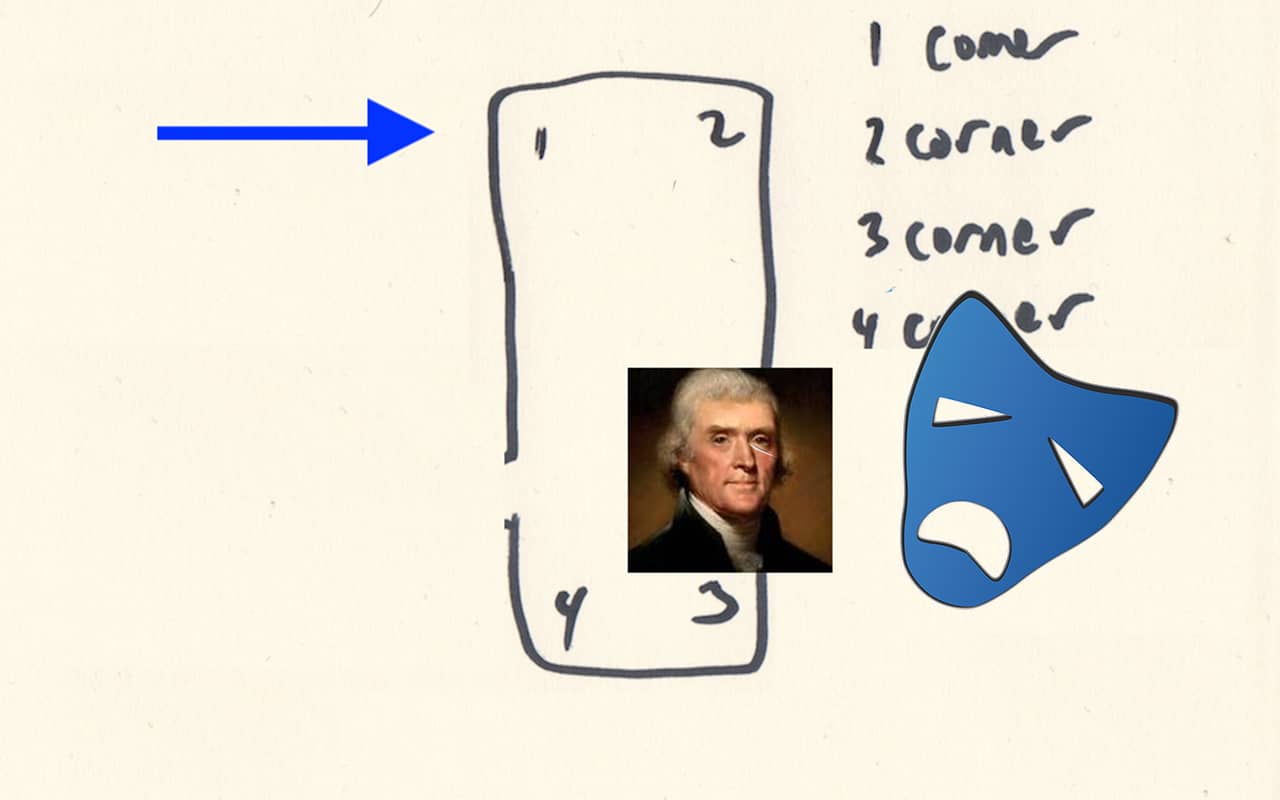
But, if that’s too much of a leap for you in the beginning, you could imagine Jefferson on the third station of your Memory Palace smashing a TV (18) set down on the head of George Jefferson.
For 01, you could have a “sad” tragedy mask , which is the image I use for that number. Since zero can be represented by an S and one by a D, then “sad” is a perfect choice. The tragedy mask makes it more than a word by turning the concept of sadness into a tangible object.
(Pro tip: I go further than just using a non-specific mask. I think about the tragic mask worn by William Shatner in his performance of Oedipus Rex. This incredibly specific image based on a story I love makes the mnemonic imagery even more concrete to my imagination and thereby much easier to recall.)
For 1809, you can probably skip having the TV image twice. I used to use a Subaru driven by a friend of mine, but now have added memory expert Brad Zupp. If you’re following the formulas of the Major, you’ll note that both words work before:
Zero can be an S or Z and nine can be a B or P. S + B = Subaru or Z + P = Zupp.
(Pro tip: Many people will wonder about the additional letters in a word like Subaru and ask: Won’t that make you think you need to recall the number 094 because R can represent four? It’s a great question, but I’m sure that you’ll find in your own practice that your brain can sort it out. Memory techniques are filled with all kinds of little knacky things like this, so it’s really important not to overthink these things techniques. Once you have the fundamentals down, you’ll find that your brain is supple enough to manage what appears to be conflicts or contradictions.)
Now, what I’ve shared with you is a process of association that progresses toward having a number of images that combine a number of pieces of information. As you develop these images yourself, you can refine or change them. And you should, because the more you streamline them, the better your skills will grow.
In sum, imagine the third Magnetic Station of a Memory Palace. On it, your friend Thomas (or another Thomas you know) has a TV balanced on his left hand. It’s playing The Jeffersons and involves someone doing something crazy with a tragedy mask. On his right hand, memory expert Brad Zupp is stomping on a Subaru.
When you revisit this part of your Memory Palace later, you’ll be able to work it all out, ideally with pen and paper using your Memory Journal. You want this form of active recall in order to encourage the rapid flow of the information into long term memory.
Advanced: Adding More Information to the Presidents
At this point, I’m going to assume that you’ve gone through all of the presidents and at least have their names.
After that goal has been reached, the first round of additional information to add I’ve suggested is their dates in office. You could also explore adding a second round by adding their birthdates and dates of demise (where relevant).
But there are also interesting facts about them you can add. To accomplish that goal, here’s what I would suggest.
James Madison was the fourth president of the United States from 1809-1817. On my fourth Memory Palace station, I would see James Hetfield of Metallica getting mad at his son. To make it more concrete, his son would be the Seventh Son of a Seventh Son Iron Maiden sung about on the iconic album of that title. You could also use the actual sun in the sky, or the sun from the movie poster for Sunshine. The options are endless.
For the dates, making a new association for 1809 is not necessary in this case. You only need something for 17, in which case you could use a tack or someone like the political commentator Tucker Carlson. Or perhaps you could have a tack piercing Carlson (which I’m sure some people would like to do). Just that one additional image gives you the dates you need for this president.
Let’s say you wanted to also remember that Madison was Princeton University’s first graduate. You could add a prince’s crown to James Hetfield’s head. Or, you could tuck a copy of The Prince by Machiavelli under his arm (or have both images).
Let’s say you wanted to remember that Madison initially opposed the Bill of Rights. In this case, you could have him burning a document up, or scratching out what it says with a quill.
Use your imagination. The images you can add are endless. And if you run out of space, all you need to do is add a Memory Palace just for James Madison.
Common Questions About Memorizing The Presidents
Some people manage to memorize all of them in under an hour. Others will need more time.
I suggest the following:
Instead of wondering how long it will take, have a strong reason why you’re memorizing the president. Then, if it takes a little longer, who cares? You’ll have fulfilled the reason and be able to soar past any bumps in the road.
How will I remember which president belongs to which number?
If you want to always remember that James K. Polk was the 11th president of the United States, you have a few options.
First, you can make all of your Memory Palaces the same. If each Memory Palace has 10 stations, for example, you can just do some simple math. Since Polk will be the first station in your second Memory Palace, he must be the eleventh president. This gives you an additional calculation to make, but it’s going to be great brain exercise for you.
Second, using the Major Method, you can develop an image for every digits from 00-99. This set of pre-designed images is fantastic and well worth developing – provided you develop the foundational skills first. Then, every station can automatically have an image that reminds you of its number without needing every Memory Palace to have a certain number of stations in order to provide a calculation.
Adding all of these additional images sounds messy! Won’t I get confused?
You might get confused if you haven’t developed the foundational skills. But in reality, most people who dedicate themselves to these techniques not only avoid confusion. They discover many wonderful options for scaling their skills over time. Typically, we find that all confusion is very welcome because it teaches us how to pivot our approach and improve over time.
Are there any songs I can use as an alternative?
Yes, and this is one of them:
However, learning this song does not diminish the need to learn a means of memorizing the song itself. If you prefer to go this route, here’s how to memorize a song.
Other people teach the Memory Palace differently? What makes this approach better?
It’s not a question of better or worse. It’s a question of the student’s willingness to focus on one teacher at a time. I recommend you have a strong why behind all of your learning projects. Then, when seeking memory improvement training, stick with one teacher at a time for at least a 90 day period. Do what they suggest and then add another teacher’s material, repeating the 90 day study principle.
Within a year, you’ll be a memory master and very grateful you focused on seriously learning these techniques instead of hopping all over the internet for the next “shiny new technique.” The reality is that all of the training out there is very similar, and your real goal is to become the kind of learner who studies and practices these techniques thoroughly.
After all, it’s (usually) only through serious study and practice in at least one profession that anyone gets to be president in the first place, right?
Related Posts
- How To Remember The States: A Step-By-Step Guide
Learning how to remember the states is fun and easy. Here are three powerful ways…
- How to Memorize the Unit Circle Fast
Learning how to memorize the unit circle shouldn't take longer than an afternoon. The best…
- How to Memorize European Countries Fast
If you need to know how to memorize European countries fast, the standard memory techniques…

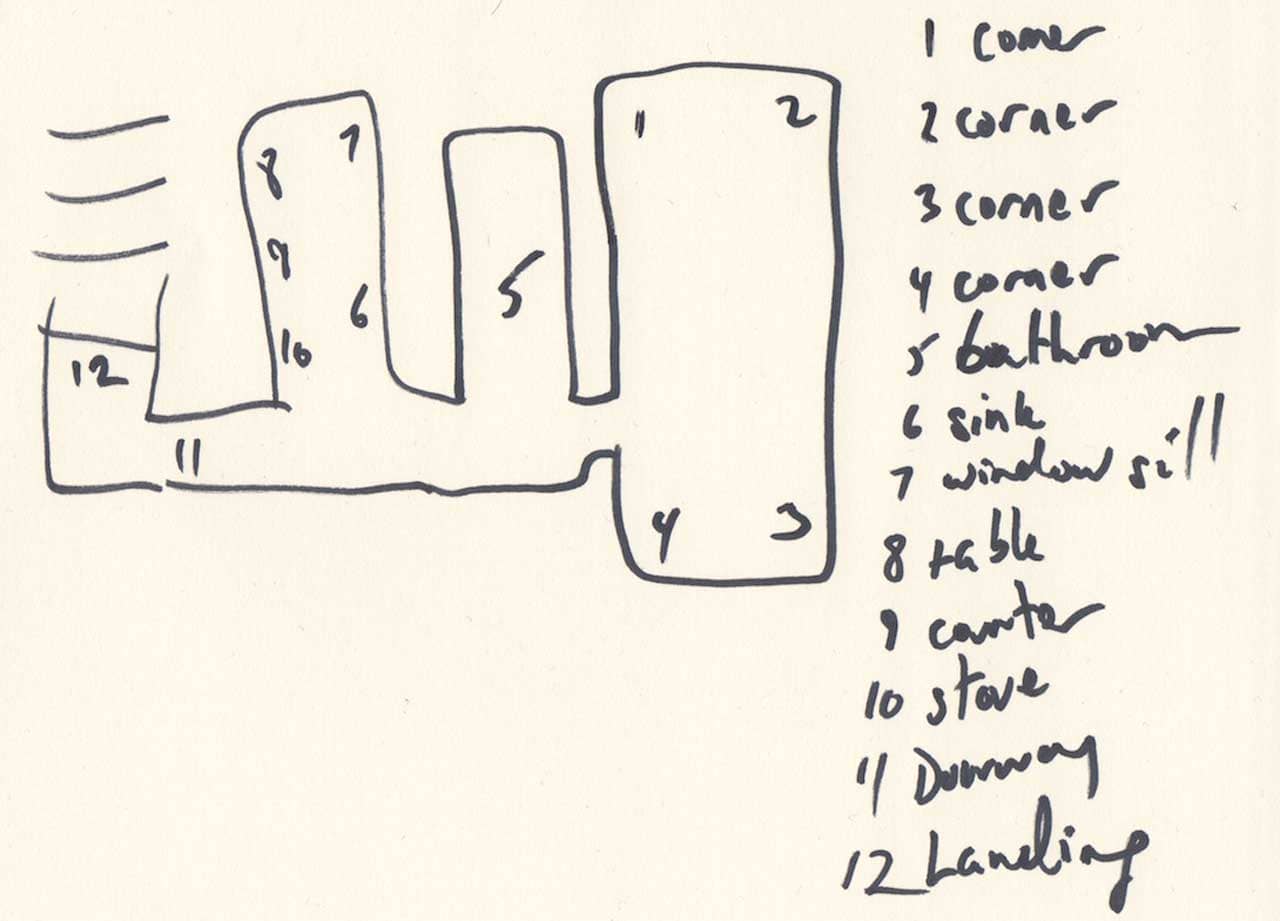

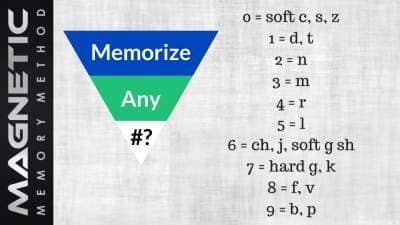



2 Responses
Awesome insight.
Thanks, Bill. I’d love to hear how things went after you apply these concepts.